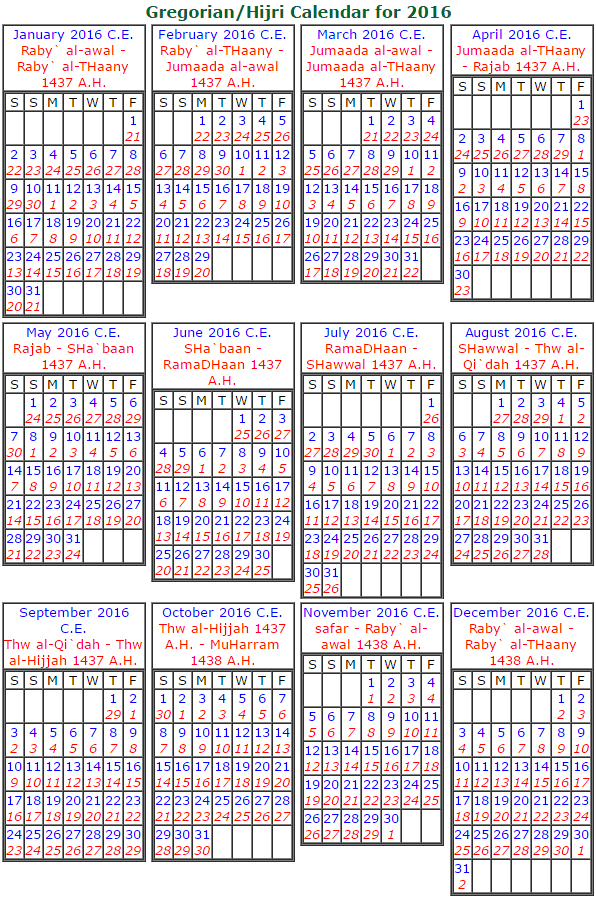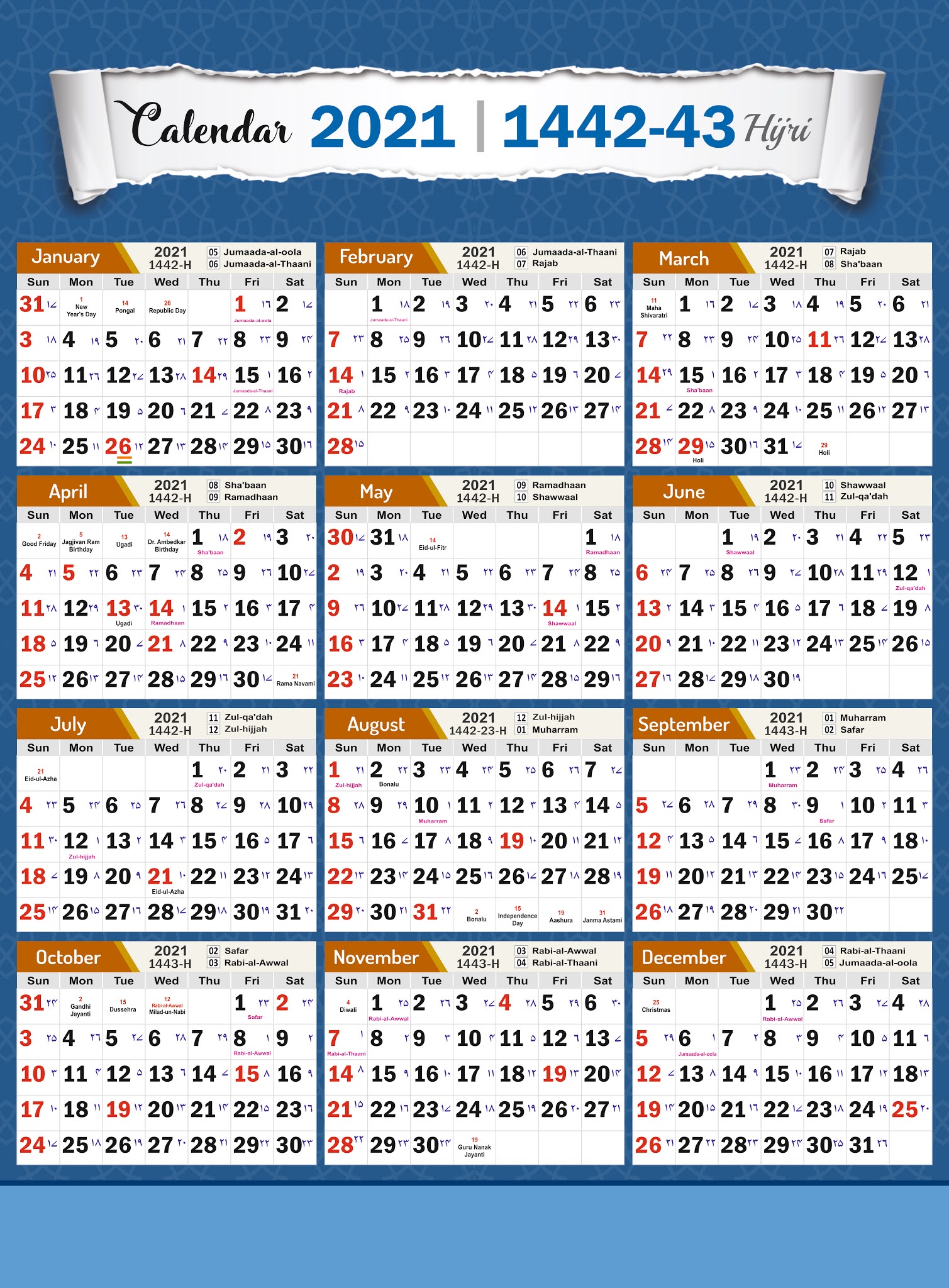
For example the Hajj and Ramadan can take place in the summer as well as the winter. This means that important Muslim festivals, which always fall in the same Hijra month, may occur in different seasons. The months in the Islamic year are not related to seasons, which are fundamentally related to the solar cycle. Since the Islamic calendar is purely lunar, as opposed to solar or luni-solar, the Muslim year is shorter than the Gregorian year by about 11 days. Made pleasing to them is the evil of their deeds and Allah does not guide the disbelieving people." They make it lawful one year and unlawful another year to correspond to the number made unlawful by Allah and make lawful what Allah has made unlawful. Indeed, the postponing is an increase in disbelief by which those who have disbelieved are led astray. And know that Allah is with the righteous. And fight against the disbelievers collectively as they fight against you collectively. That is the correct religion, so do not wrong yourselves during them. Say, ‘They are measurements of time for the people and for Hajj’…" Allah Almighty also says (what means): "Indeed, the number of months with Allah is twelve months in the register of Allah the day He created the heavens and the earth of these, four are sacred.

It is considered a divine command to use Hijra calendar with 12 (purely) lunar months without intercalation, as evident from the following verses of the Noble Quran (which mean): "They ask you about the new moons. Some of the most important dates in the Islamic year are: Muharram 1 (First day of the year) 27 Rajab (Al Israa Wal Mi'raj) 1 Ramadan (first day of fasting) 17 Ramadan (Battle of Badr) last 10 days of Ramadan which include Lailatul Qadar (Night of Power) 1 Shawwal (‘Eid Al Fitr) 8-10 Thul Hijjah (Hajj) and 10 Thul Hijjah (‘Eid Al Adha). They are: Muharram, Safar, Rabi Al-Awwal, Rabi al Akhir, Jamadi Al Awwal, Jamadi Al Akhirah, Rajab, Sha'ban, Ramadan, Shawwal, Thul Qa’dah and Thul Hijjah. The Islamic year consists of 12 (lunar) months. And this chronological study is possible only by adopting the Hijra calendar to indicate the year and the lunar month in line with our cherished traditions. But our calculations in the Gregorian calendar keep us away from those events and happenings, which are pregnant with admonitory lessons and instructions. All the events of Islamic history, especially those which took place during the life of the Noble Prophet and afterwards, are quoted in the Hijra calendar era. The Islamic year reminds Muslims every year not of the pomp and glory of Islam but of its sacrifice, and prepares them to do the same. Almighty Allah wanted to teach man that struggle between Truth and Evil is eternal!" It starts with Hijra, or the sacrifice for the cause of Truth and for the preservation of the Revelation.

It has a much deeper religious and historical significance.Īs an Islamic scholar wrote on the advent of the 15th century of the Hijra calendar 22 years ago, "It (the advent of the 15th century) is indeed a unique occasion to ponder that the Islamic Era did not start with the victories of Islamic wars, nor with the birth or death of the Prophet nor even with the Revelation of the Holy Quran itself. To Muslims, the Hijra calendar is not just a sentimental system of time reckoning and dating important religious events, e.g. It led to the foundation of the first Muslim city-state, a turning point in Islamic and world history. The Hijra is the central historical event of early Islam.

Muharram 1, 1 AH, corresponds to July 15, 622CE. The Islamic calendar is usually abbreviated AH in Western languages from the Latinized Anno Hegirae. The actual starting date for the calendar was chosen (on the basis of purely lunar years, counting backwards) to be the first day of Muharram, the first month of the year of the Hijra. It was finally agreed that the most appropriate reference point for the Islamic calendar was the Hijra. Umar, may Allah be pleased with him, consulted his advisers on the starting date of the new Muslim chronology. He did it in an attempt to rationalize the various, at times conflicting, dating systems used during his time. The Islamic calendar, which is based purely on lunar cycles, was introduced in 638 Christian Era (CE) by Umar ibn Al Khattab, a close companion of the Noble Prophet and the second Caliph of Islam. It also points to one of the most significant events in the Islamic history, i.e., the Hijra (Divinely ordained migration) of Muhammad the Prophet of Islam, from Makkah to Madeenah, nearly 1435 years ago. The first of Muharram marks the beginning of the new Islamic, or Hijra year.


 0 kommentar(er)
0 kommentar(er)
